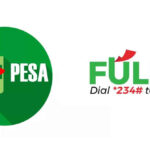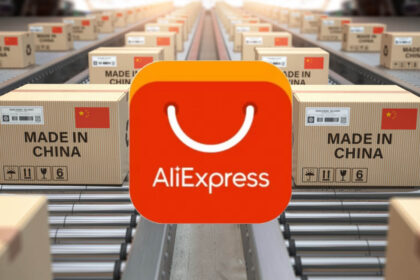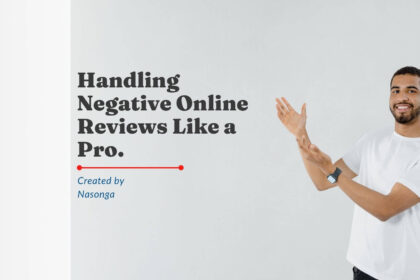Are low-cost lead generation strategies effective?
Marketers come up with the most novel ways to attract more customers—which explains why some brands spend thousands of dollars on marketing campaigns.
But what happens when your budgetary allocation is already stretched thin? Is it possible for your pipeline to brim with high-quality leads on a shoe-string budget?
Yes, it is, and we have five low-cost lead generation strategies you can employ today.
1. Create Lead Magnets
Lead magnets are valuable resources that marketers offer prospects for contact information.
Your website and social pages attract all kinds of visitors. Some come out of curiosity, others are looking for educational content, and others are interested in buying from you.
These visitors browse your site and download content for consumption.
But just because a person downloaded content doesn’t mean they are a good fit for your business—as we said, they could be curious.
For this strategy to work, you need first to understand your target audience. You want to attract good-fit leads—the kind that is likely to turn into customers.
Read Also: How to generate leads for business
Think about the below questions:
- What content is your ideal audience looking for?
- What pressing questions or challenges are they faced with?
- What content will they respond to at the different stages of the buyer’s journey?
- How do they prefer consuming content?
You’ll have a clearer understanding of the content that will pull in good-quality leads in answering these questions.
An effective lead magnet (content) should:
- Address real challenges your customers face and interest them in your solutions.
- Demonstrate your expertise and key differentiators from competitors.
- Be instantly accessible the moment prospects share their contact.
- Easy to digest. Don’t overwhelm prospects with complicated and technical jargon.
Examples of lead magnets include industry reports, case studies, resources guides, templates and cheat sheets, free consultation services, and webinars.
2. Make Cold Calls
Research shows up to 82 percent of B2B buyers agree to meet vendors who contact them. A further 69 percent accept calls from new vendors.
If you’re looking for a reliable way to build your pipeline, cold calling should be in the plans. It’s a great way to start the conversation that leads to conversion.
Best practices include:
- Define your ideal customers. Which businesses do you want to sell to? What characterizes the businesses that need your solutions? What signals indicate a business is interested in your offerings or ready to make a purchase.
- Build familiarity. Once you have identified your customer, it’s time to track down some information about them. Look up the business, the industry they are in, pressing challenges, and current solutions.
- Prepare your calling guide. Include your opening line, areas of interest, intelligent questions to encourage dialogue, possible objections and their counters, and a voice mail message in case you reach it.
- Defeat call reluctance. No one enjoys being rejected. It causes all kinds of feelings, including inadequacy. Do your best to maintain a positive attitude, set achievable calling goals, and celebrate small wins.
- Start calling. Create a distraction-free environment by blocking time to make the calls and turning off phone and computer notifications. Rehearse key points, relax, and smile as you make the calls.
3. Referral Marketing
Referral marketing makes prospecting a lot easier.
The referral person has experienced your solutions and knows their benefits, which gives their word more weight.
A study by Nielsen revealed that up to 84 percent of the respondents find recommendations from friends and family credible.
With credibility established on your behalf, you can focus on nurturing the prospects and possibly convert them.
Here are ways to attain leads from this strategy:
- Social proof. Ask customers for reviews. When happy customers share their experiences with your solutions, other businesses can see the benefits from a user’s perspective. This encourages them to engage you.
- Reward customers that refer others to you. Discounted prices, coupons, gift cards, or free shipping are great incentives to encourage your customers to spread the word.
- Encourage employees to refer businesses. Create an incentive program for staff who direct potential customers your way. If you have ten employees and each share at least three leads, you’ll have plenty to work with.
- Ask happy customers for referrals. Ideally, you’ll want to give the customers a couple of weeks to experience your solutions before making the request. If they are satisfied, they will most likely think of someone who can benefit as well.
4. Email Marketing
An email lead generation tactic helps teams collect prospective customers’ information through opt-in email forms.
This information enables you to guide your leads down the funnel to conversion.
Research indicates that up to 48 percent of business professionals, sales, and marketing teams find an email marketing an effective tool for lead generation.
If you nurture these leads well, they can be a crucial source of revenue.
Best practices include:
- Identifying your target audience. Put together buyer personas to gain an understanding of your ideal customer’s needs, preferences, and buying behavior.
- Create irresistible offers. Why do people open some emails and ignore others? It comes down to your ability to generate interest. Your buyer personas will help you create valuable resources that encourage your audience to engage.
- Use social platforms to promote your offerings or run paid ads. With their massive reach, social channels may help generate leads and increase followers.
- Unsubscribe is real. Once your leads have signed up for emails, keep them engaged through valuable content. Make your emails enjoyable by using creative headlines, video, images, and a conversational tone.
5. Host Webinars
Webinars are excellent options for increasing brand visibility and showcasing your expertise.
You can reach massive audiences just as easily as a targeted group to discuss your offerings, industry trends, and other topics of interest.
Webinars are also interactive, allowing your audience to ask questions or post comments increasing engagement.
Here are valuable considerations for this strategy:
- Identify your audience. Even with a global reach, you’ll still need to be clear about the audience your message should reach. Map your buyer personas to facilitate content creation. Afterward, you can analyze the questions asked and attendee information to develop content for future webinars.
- Conduct dry runs before the actual event to ensure optimal equipment, picture, and sound quality. It will also help you and your guests get comfortable around the camera.
- Promote your webinar. Create a catchy landing page with details about the topic you’ll be discussing and sign up—you could even add a short video here. Use relevant keywords for greater visibility and talk about the event on your social pages and email campaigns.
- Build a funnel for the webinar. Send thank you emails to everyone who registered for the event. Deliver relevant content pieces to the attendees to keep the event top of mind. After the event, maintain communication with these attendees by sending replays and making follow-ups.













